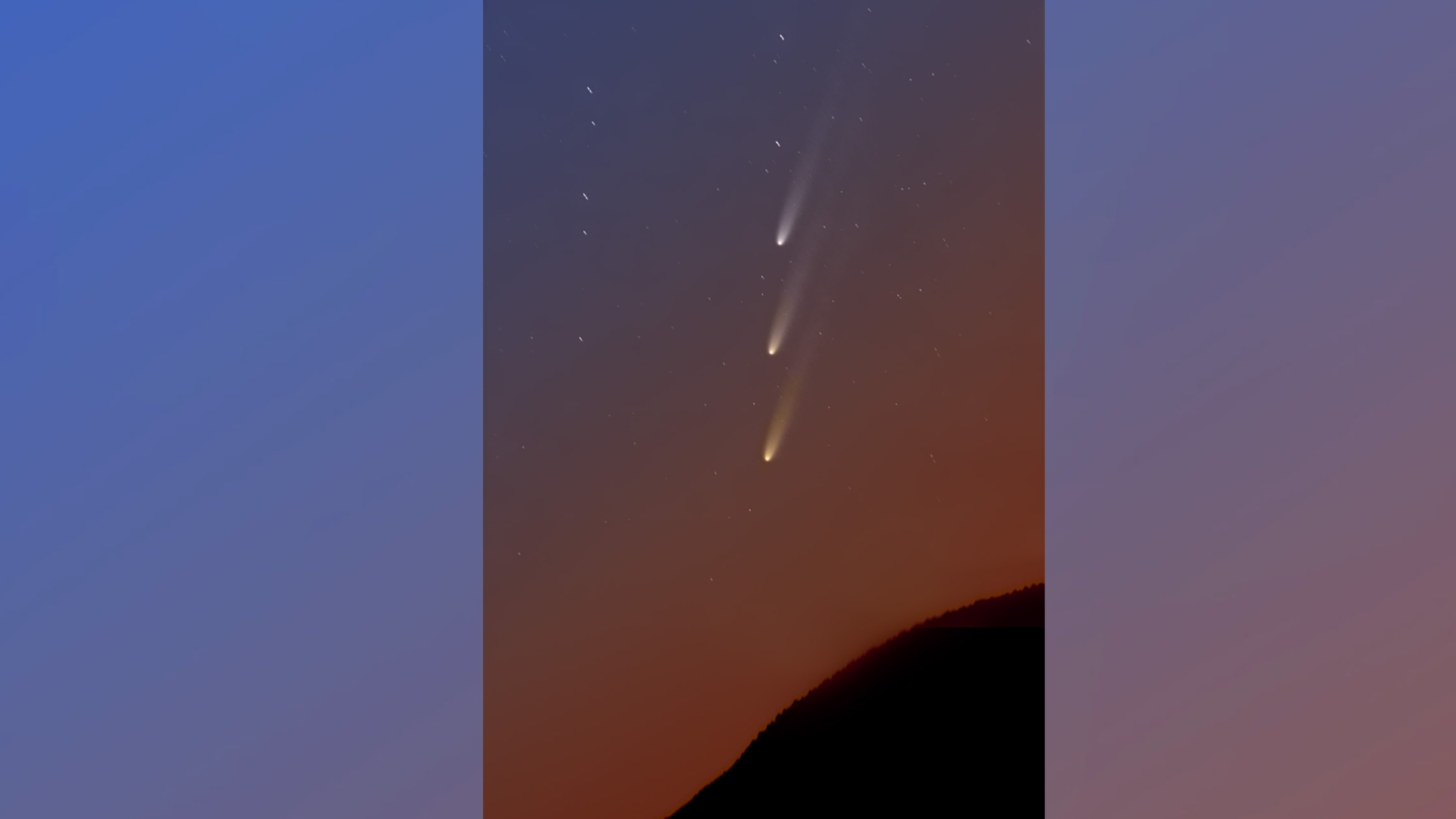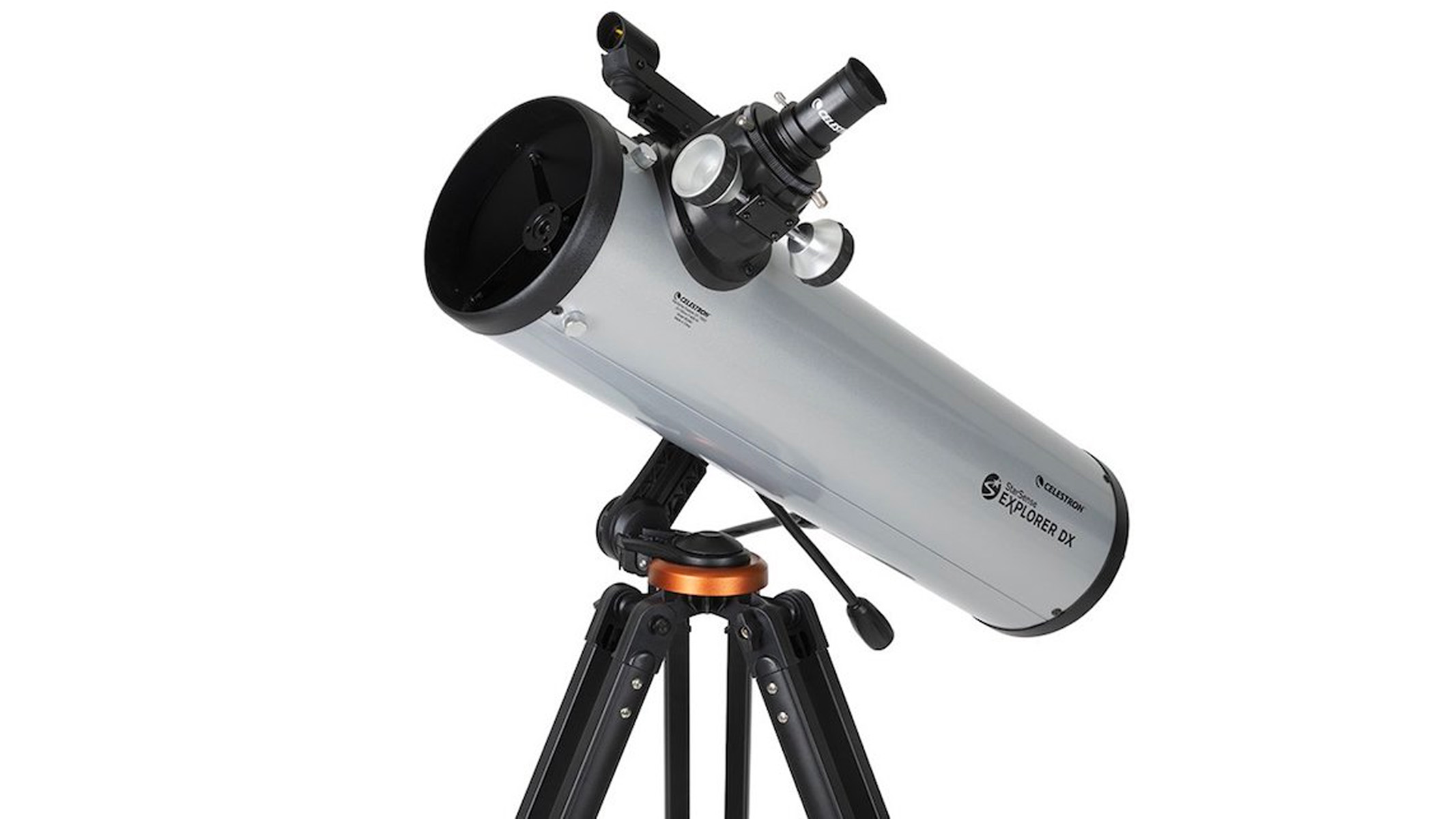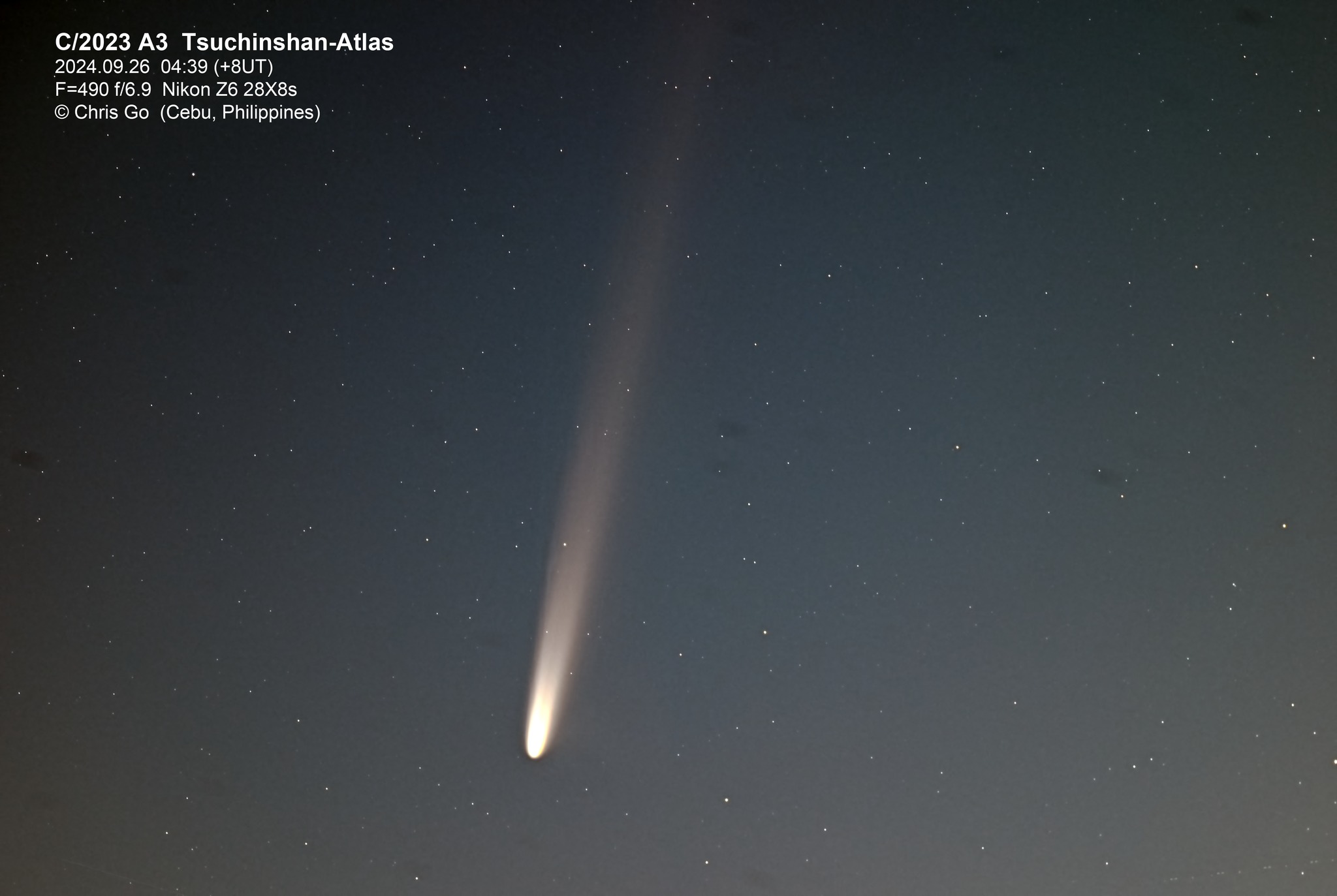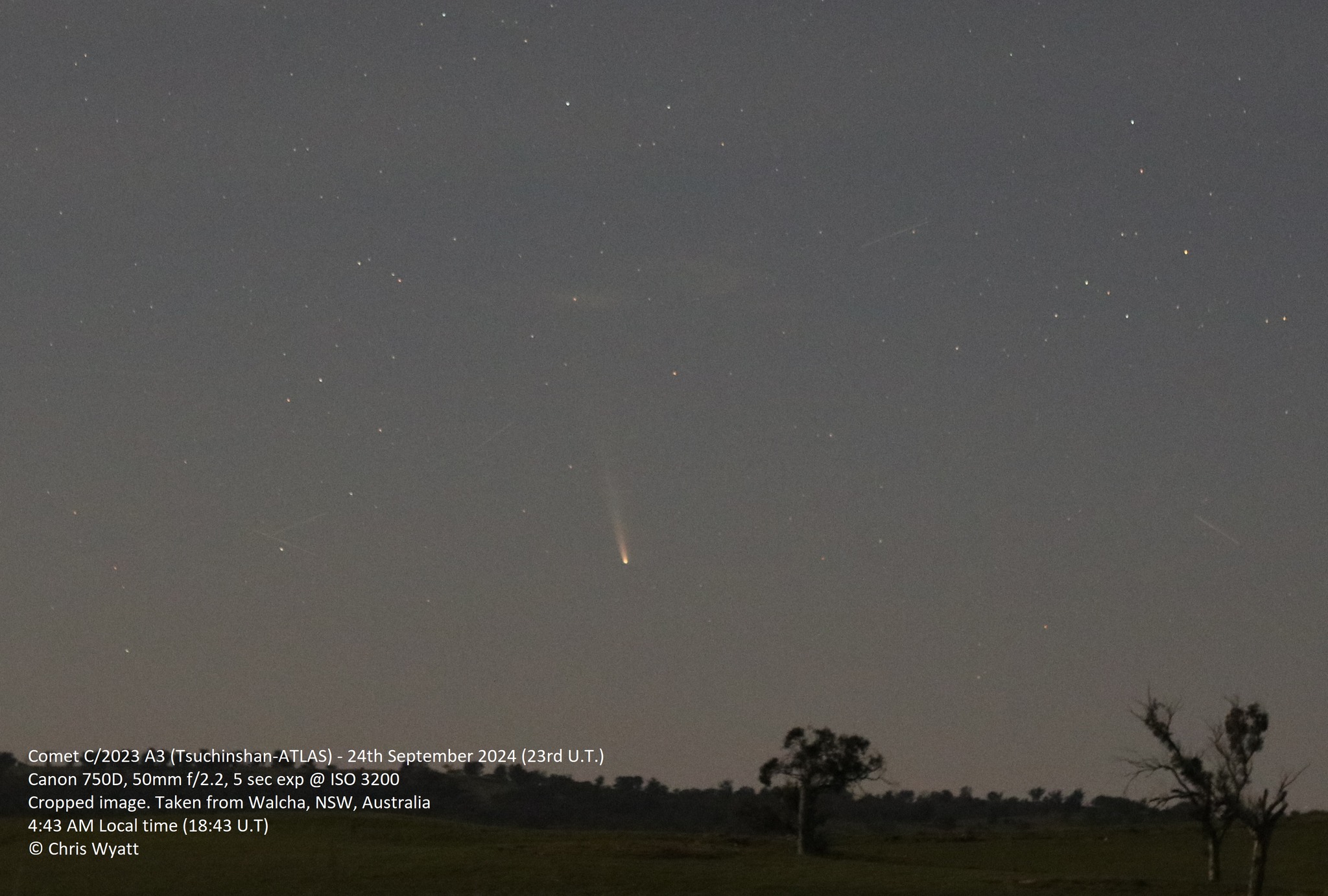Comet Tsuchinshan-ATLAS may dazzle this weekend. But is the best yet to come?

Excitement is building as Comet Tsuchinshan–ATLAS (pronounced Choo-cheen-SHAHN -ATLAS) continues to brighten as it continues to approach the sun and the Earth.
This remote, object, discovered on Jan. 9, 2023, at the Purple Mountain Observatory (Tsuchinshan) in China, was originally believed to be an asteroid before it was found to actually be a comet on Feb. 22 2023 by the Asteroid Terrestrial-Impact Last Alert System (ATLAS) search program in South Africa. The orbit computed then showed that the comet would dive deep into the inner solar system a year and a half later, reaching perihelion (closest approach to the sun) at a distance of 36.38 million miles (58.54 million km) — Mercury's average sun distance — on Friday, Sept. 27 at 1:47 p.m. EDT
(1747 GMT).
For the past couple of weeks, skywatchers in the Southern Hemisphere and the tropics have been imaging the comet as it climbs out of bright morning twilight. With each passing morning, comet visibility is slowly improving for more northerly locations.
For those located at mid-northern latitudes (~40° north), probably the best time to try and observe the comet in the morning sky will come between Friday, Sept. 27 and Tuesday, Oct. 1. During this five-day time frame, prospective comet observers should have their best opportunity to make a sighting between 45 minutes to one hour prior to local sunrise.
Generally speaking, we are talking about 5:55 a.m. to 6:10 a.m.
Viewing difficulties

Looking for a telescope to see comets in the night sky? We recommend the Celestron StarSense Explorer DX 130AZ as the best for basic astrophotography in our best beginner's telescope guide.
But there will be some difficulties in securing a view for the following reasons.
1. Low altitude
Breaking space news, the latest updates on rocket launches, skywatching events and more!
During this 15-minute window of opportunity, Tsuchinshan–ATLAS, will sit at an altitude of 5° or less above the horizon. Viewers should concentrate on that part of the horizon at an azimuth of approximately 10° south (or to the right) of due east. Make sure that you have a clear, unobstructed view in that direction, with no buildings or trees getting in your way. Your clenched fist held at arm's length can be used as a sextant to measure angular degrees. Correctly held, your fist will measure 10 of those degrees. So, you can use your fist to make a reasonable estimate of degrees either horizontally or vertically. Altitude is measured vertically upward from the horizon. In looking for the comet, you will need to concentrate on an area no more than "half a fist" up from the horizon. Azimuth is the horizontal angle or direction of a compass bearing. In this case, look "one fist" (held horizontally) to the right of due east. That's where the comet should be.

Christopher Go based in Cebu City in the Philippines photographed the comet on the morning of Sept. 26, using a Sharpstar 71 and a Nikon Z6 camera on a ZWO AM5 mount. The telescope was working at 490mm f/6.9. "This was captured less than an hour before sunrise. This comet is HUGE!" Go told Space.com.

Michael Mattiazzo imaged Comet Tsuchinshan-ATLAS on September 17 at 19:25 UT using a C11 RASA f/2.2 + Canon 6D from Swan Hill, Victoria, Australia.

Chris Wyatt provided Space.com with a cropped image, taken on Sept. 23 at 18:29 U.T. from Walcha, New South Wales, Australia. He notes: "Moonlight and twilight caused some interference. The head of the comet appeared as a white coloured star-like object encircled within a small hazy outer coma. Difficult due to thin haze/cloud layers in the twilight. I was able to make it out easy enough with averted vision," Wyatt told Space.com.

2. Atmospheric absorption
The brightness of the comet during this five-day interval is expected to be somewhere in the range of magnitude of +3 to +2 (the lower the number, the brighter the object). These magnitudes closely correlate to the average brightness of the four stars that comprise the bowl of the Big Dipper. However, at an altitude of 5° or less, the comet is going to be mired in the layer of haze that is always present near the horizon. As such, allowance must be made for atmospheric absorption which diminishes an object's brightness, especially when so low to the horizon. At an altitude of 4°, a star may appear as much as two magnitudes fainter, while at 1° it can appear as much as three magnitudes fainter. And remember that you're not looking for a sharp pinpoint of light like a star, but a rather fuzzy object.
3. Morning twilight
One hour before sunrise is the start of nautical twilight. The sky is not completely dark, and the outlines of objects on the ground may be visible. A fair number of stars may be visible, but with each passing minute, the background sky is getting brighter, making it increasingly difficult to perceive dim objects, especially those close to the horizon (like the comet).
And so, for these reasons, we would strongly advise that you bring along a good pair of binoculars so that you can scan along the horizon for your quarry. You'll be looking for a wispy object with a tail or appendage stretching upward and to the right from the bright end, or head (called the coma). Hopefully, once you have sighted the comet in binoculars, you'll be able to glimpse it directly with your unaided eye.
Likely your best opportunity to make a sighting will come on Monday morning (Sept. 30), when you can use a 5% illuminated waning crescent moon, which one hour before local sunrise will stand 13° directly above the eastern horizon. Using the moon as your benchmark, the comet will be situated 15° to the lower right of the moon.
Of course, there is always a possibility that the comet will shine brighter than predictions currently indicate and will be easier to sight through the dawn twilight. But at this moment, it is probably best to keep expectations low.
Besides . . . a much better outlook for comet viewing is expected during October.
Daytime visibility
Soon after October opens, the comet is already dashing back in the sun's direction and briefly disappears from view before it dramatically emerges into the evening sky near the end of the second week of October.
If the comet releases a lot of dust as it rounds the sun, forward scattering — a backlighting effect as viewed from our earthly perspective — could cause Tsuchinshan–ATLAS's brightness to dramatically increase. Around this time the comet will experience an extreme brightness surge of nearly -7 magnitudes — an increase of more than 600-fold in brightness — due to intense forward-scattering of sunlight in our direction by the micron- to submillimeter-size comet dust grains in the comet's coma and tail.
At forecasted magnitudes of -4.3 and -4.7 respectively — the brightness of Venus — on Oct. 8 and Oct. 9, it is quite possible that the comet may be visible in daylight, if the sun is safely positioned, hidden behind a building. The consensus of experienced comet observers is that it is not very likely that the comet will be visible by the naked eye at that time, but small binoculars and telescopes may enable a sighting. According to comet expert Joseph Marcus, daylight comets are very rare, occurring every two decades or so on average. The last daylight comet was C/2006 P1 (McNaught) in January 2007.
Evening sky visibility
After Oct. 9, Tsuchinshan–ATLAS will literally vault into the evening sky, with visibility circumstances rapidly improving with each passing night. On Oct. 12, the comet will be passing the closest Earth: 44 million miles (71 million km) away. On that evening, it could be shining as bright as zero magnitude and hovering about 5° above the western horizon, one hour after sunset. In the nights that follow, it could unfurl a tail possibly measuring 20° or more in length.
Thereafter, it will be moving away from both the sun and Earth and will fade more rapidly.
Two weeks later, on Oct. 26, will find the comet at a much dimmer fifth magnitude, but soaring to 30° high in the southwest sky as darkness falls. It should continue to be easily seen in binoculars and telescopes for another month or so.
So even if you don't get any views of the comet between now and the start of October, take heart in the fact that the best is yet to come!
Joe Rao serves as an instructor and guest lecturer at New York's Hayden Planetarium. He writes about astronomy for Natural History magazine, the Farmers' Almanac and other publications. Follow us on Twitter @Spacedotcom and on Facebook.

Joe Rao is Space.com's skywatching columnist, as well as a veteran meteorologist and eclipse chaser who also serves as an instructor and guest lecturer at New York's Hayden Planetarium. He writes about astronomy for Natural History magazine, Sky & Telescope and other publications. Joe is an 8-time Emmy-nominated meteorologist who served the Putnam Valley region of New York for over 21 years. You can find him on Twitter and YouTube tracking lunar and solar eclipses, meteor showers and more. To find out Joe's latest project, visit him on Twitter.

